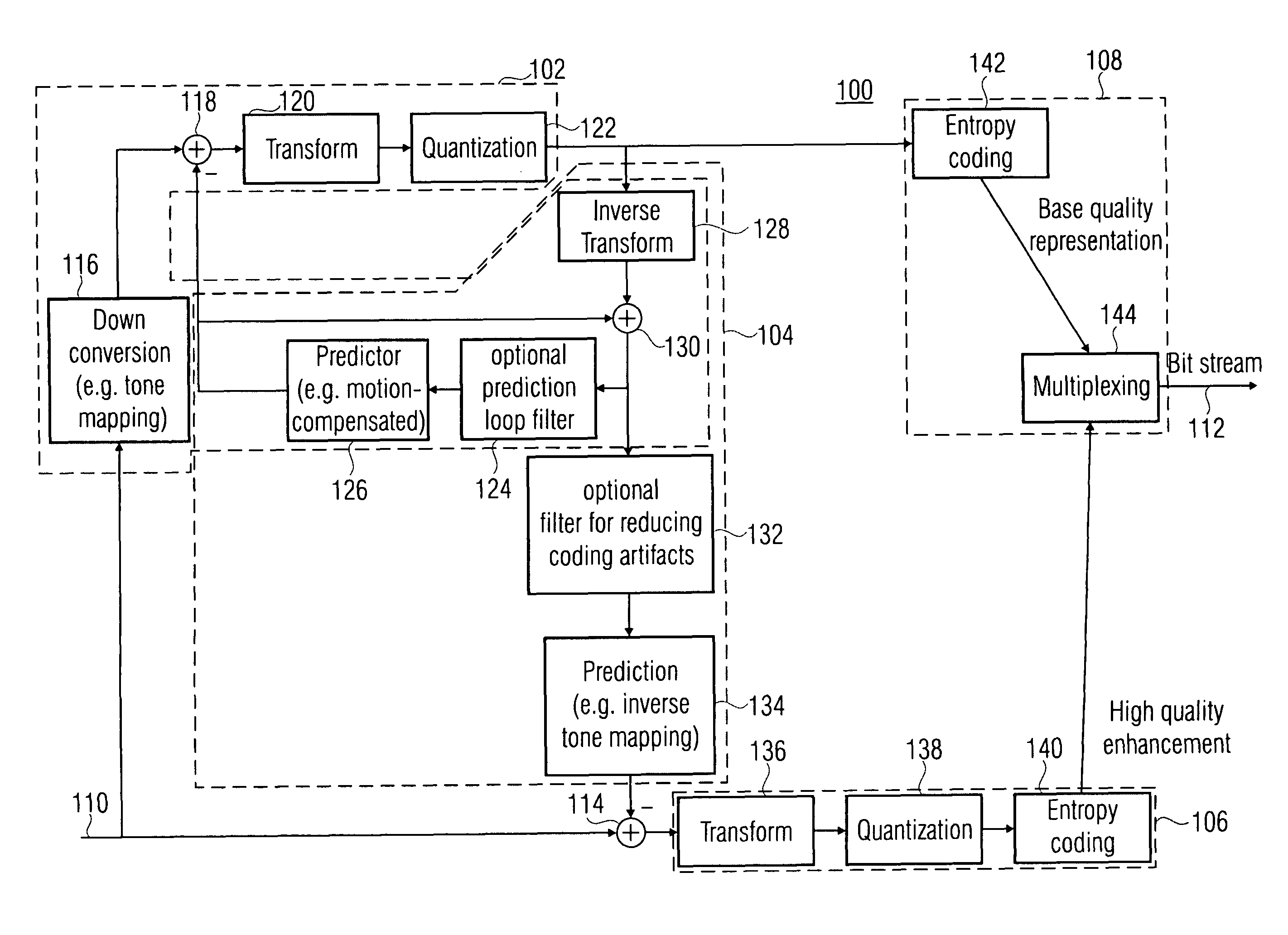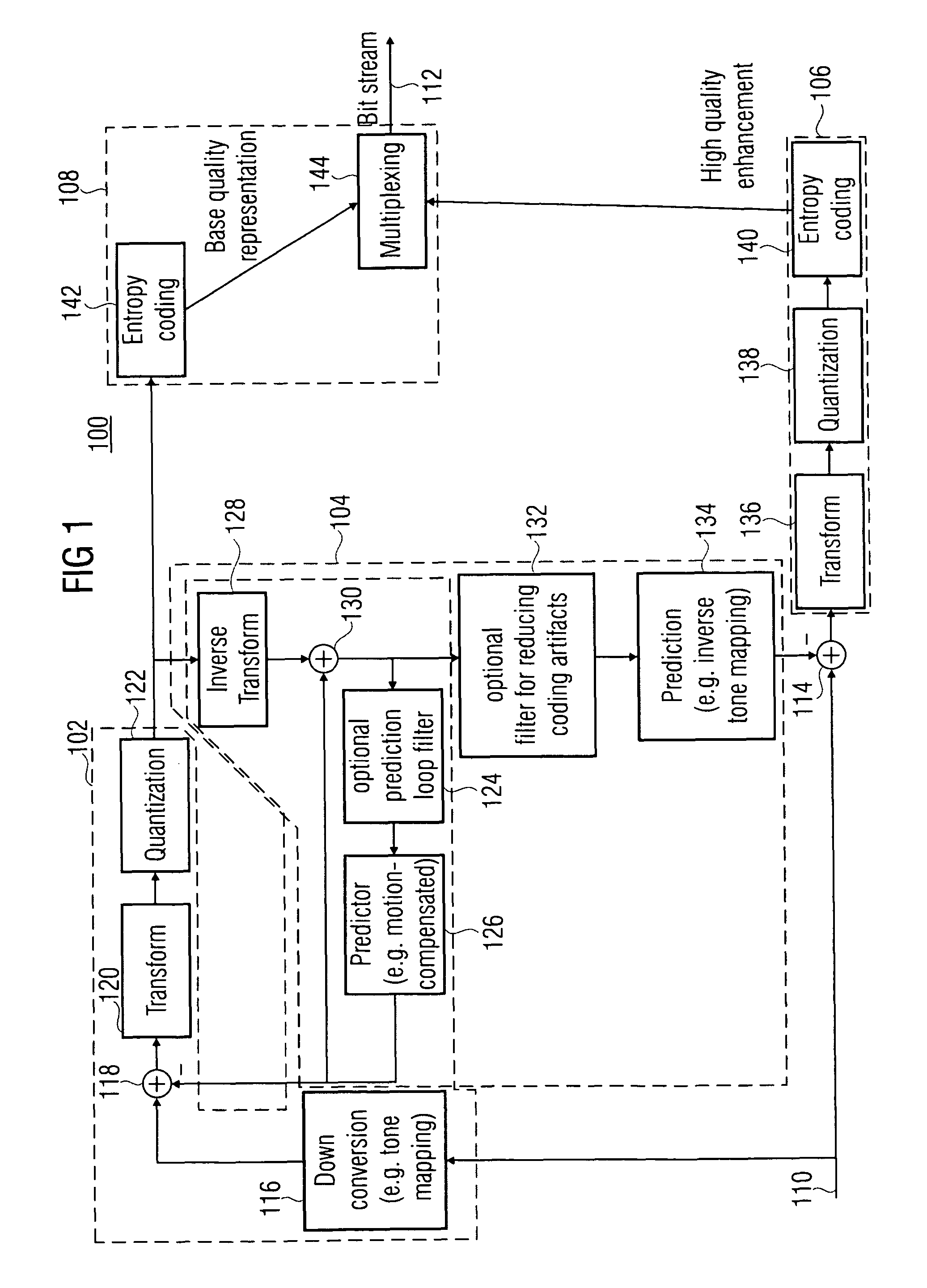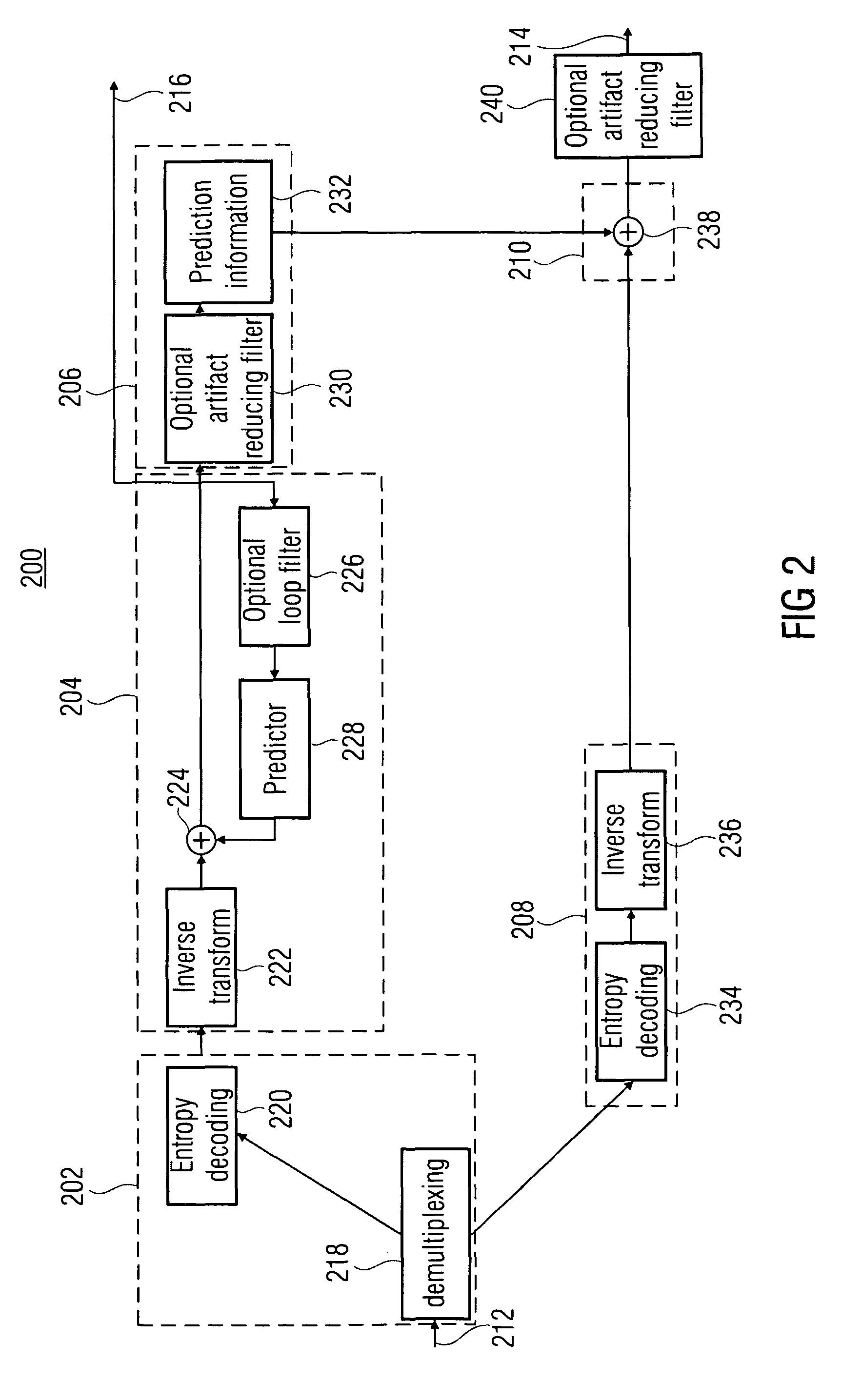Quality scalable coding with mapping different ranges of bit depths
a bit depth and bit depth technology, applied in the field of quality scalable coding with mapping different ranges of bit depths, can solve the problems of reducing efficiency and increasing overhead, respectively, and achieve the effects of reducing chroma sub-sampling, reducing overhead, and increasing bit depth
- Summary
- Abstract
- Description
- Claims
- Application Information
AI Technical Summary
Benefits of technology
Problems solved by technology
Method used
Image
Examples
Embodiment Construction
[0029]FIG. 1 shows an encoder 100 comprising a base encoding means 102, a prediction means 104, a residual encoding means 106 and a combining means 108 as well as an input 110 and an output 112. The encoder 100 of FIG. 1 is a video encoder receiving a high quality video signal at input 110 and outputting a quality-scalable bit stream at output 112. The base encoding means 102 encodes the data at input 110 into a base encoding data stream representing the content of this video signal at input 110 with a reduced picture sample bit-depth or a chroma-sampling format having same luma resolution, but reduced chroma resolution compared to the input signal at input 110. The prediction means 104 is adapted to, based on the base encoding data stream output by base encoding means 102, provide a prediction signal with full or increased picture sample bit-depth and / or full or increased chroma resolution for the video signal at input 110. A subtractor 114 also comprised by the encoder 100 forms a...
PUM
 Login to View More
Login to View More Abstract
Description
Claims
Application Information
 Login to View More
Login to View More - R&D
- Intellectual Property
- Life Sciences
- Materials
- Tech Scout
- Unparalleled Data Quality
- Higher Quality Content
- 60% Fewer Hallucinations
Browse by: Latest US Patents, China's latest patents, Technical Efficacy Thesaurus, Application Domain, Technology Topic, Popular Technical Reports.
© 2025 PatSnap. All rights reserved.Legal|Privacy policy|Modern Slavery Act Transparency Statement|Sitemap|About US| Contact US: help@patsnap.com



